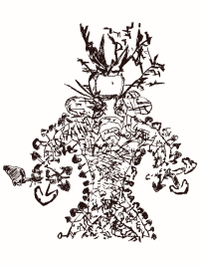
Photo from wikipedia
The Aboriginal cultural traditions of Australia, their histories, philosophies and characteristics, have fascinated and intrigued European observers and scholars for a very long time. This paper explores some implications of… Click to show full abstract
The Aboriginal cultural traditions of Australia, their histories, philosophies and characteristics, have fascinated and intrigued European observers and scholars for a very long time. This paper explores some implications of recent ethnographic information and engagements related to the themes of Indigenous rock art, knowledge and the understanding of Country in the Kimberley region, Western Australia, for the interpretation of archaeological evidence. It is argued that the Aboriginal understanding of cultural features and practices, rock art and the natural environment is best described within a framework of relational ontology. This orientation has important consequences for the conceptualization of a range of interrelated key themes, most importantly ‘space and place’, ‘story and narrative’ and ‘knowledge and representation’. Thus, the paper calls for the development of opportunities of intellectual engagement and exchange as well as collaborative and creative responses, which should also include new forms of expression in academic contexts that themselves reflexively engage with the limitations of writing and representation.
Journal Title: Cambridge Archaeological Journal
Year Published: 2018
Link to full text (if available)
Share on Social Media: Sign Up to like & get
recommendations!